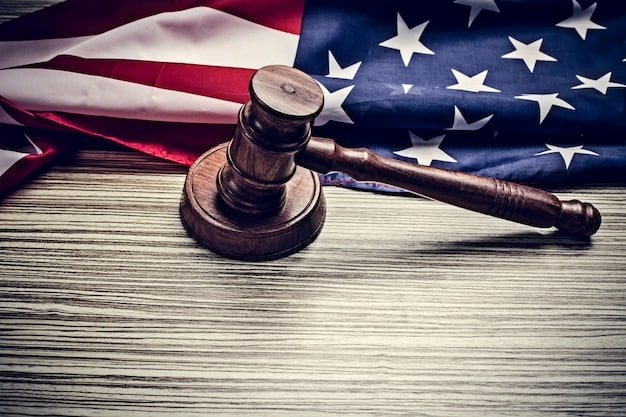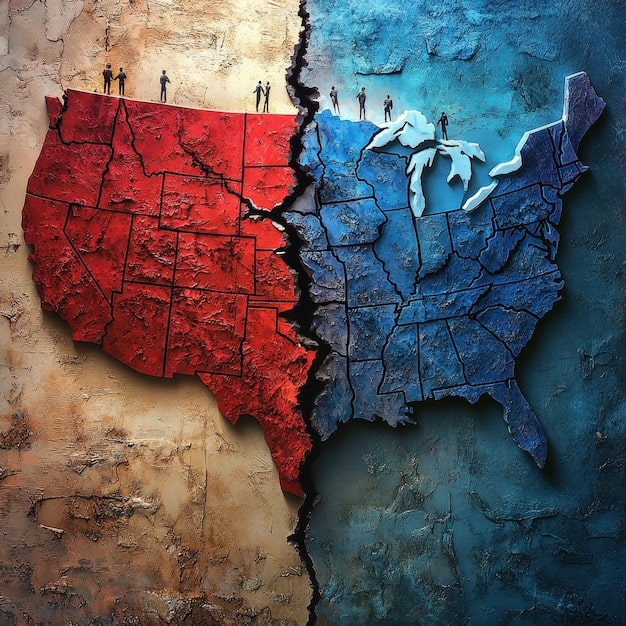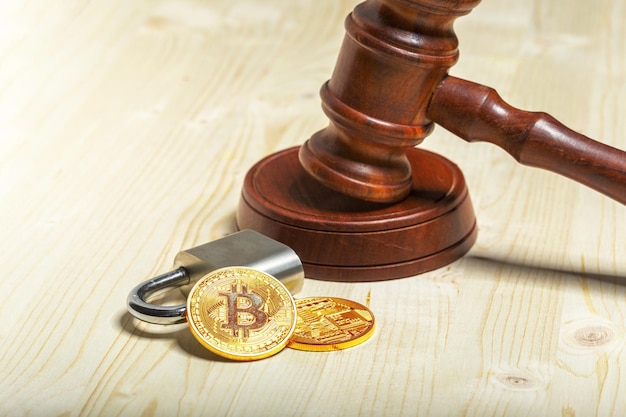Supreme Court Ruling on Voting Rights: National Impact & Analysis

Anúncios
Breaking: A recent Supreme Court ruling has significant implications for voting rights across the nation, potentially altering access and regulations for elections in various states.
The landscape of voting rights in the United States has been significantly altered by a recent Supreme Court decision. This Breaking: Supreme Court Ruling Impacts Voting Rights Across the Nation and raises crucial questions about the future of elections and voter access. Let’s dive into the details, exploring the immediate and long-term consequences of this landmark decision.
Anúncios
Understanding the Supreme Court’s Decision on Voting Rights
The Supreme Court’s decision on voting rights has far-reaching implications and has become a focal point of national attention. The ruling directly affects how states can regulate elections and what measures they can take to ensure the integrity and accessibility of the voting process. This section provides an overview of the key aspects of the decision, its legal basis, and the immediate reactions from various stakeholders.
Key Aspects of the Ruling
The core of the Supreme Court ruling revolves around the interpretation of specific provisions of the Voting Rights Act and the extent to which federal oversight can govern state election laws. The justices considered arguments related to voter ID requirements, redistricting practices, and early voting provisions. Understanding these key aspects is crucial for assessing the potential impact on voter turnout and electoral fairness.
Legal Basis and Dissenting Opinions
The majority opinion of the court justified the decision by citing principles of states’ rights and the need for judicial restraint in matters of election administration. Dissenting opinions, however, raised concerns about the potential for discriminatory practices and the erosion of protections for minority voters. Examining the legal basis and dissenting arguments provides a balanced view of the court’s rationale and the potential consequences of the ruling.
Anúncios
- Impact on Voter ID Laws
- Restrictions on Early Voting
- Redistricting and Gerrymandering
Immediately after the ruling, reactions were swift and varied, highlighting the deeply polarized views on voting rights in the country. Civil rights organizations expressed alarm, warning of potential voter suppression, while proponents of the decision praised it as a necessary step towards restoring state autonomy in election matters. Political leaders and legal scholars weighed in with diverse perspectives, underscoring the complexity and significance of the ruling.
In conclusion, the Supreme Court’s decision marks a pivotal moment in the ongoing debate over voting rights in the United States. Understanding the key aspects, legal basis, and initial reactions is essential for comprehending the potential consequences and navigating the evolving landscape of election law.

Immediate Impact on State Election Laws
Following the Supreme Court’s decisive action, many states are now reassessing and adjusting their election laws. The immediate impact includes changes to voter registration processes, early voting options, and the implementation of stricter voter ID requirements. These legislative and administrative shifts are expected to have varying effects on different demographics and could potentially alter voter turnout in upcoming elections.
Changes to Voter Registration
Several states have already begun to revise their voter registration procedures in response to the Supreme Court ruling. These changes may include more stringent documentation requirements, limitations on third-party registration drives, and the elimination of same-day voter registration. The effect of these adjustments is likely to be felt most acutely by first-time voters, minority communities, and individuals with limited access to resources.
Early Voting and Absentee Ballots
The Supreme Court’s decision has also prompted a reevaluation of early voting options and absentee ballot rules across the states. Some states are considering reducing the number of early voting days, restricting the availability of absentee ballots, and imposing stricter deadlines for mail-in voting. These changes could particularly impact elderly voters, individuals with disabilities, and those who face transportation challenges.
The immediate consequences of the Supreme Court ruling are widespread and multifaceted, affecting various aspects of the electoral process at the state level. It is crucial to monitor these developments closely to understand the full scope of the impact on voter access and electoral integrity. The actions taken by state legislatures and election officials in the coming months will shape the future of voting rights in the United States.

Potential Long-Term Consequences for Voter Turnout
The Supreme Court ruling on voting rights has ignited debates about its potential impact on voter turnout, particularly among minority and marginalized communities. Experts fear that new restrictions could lead to decreased participation and further disenfranchisement, while others argue that the changes will ensure election integrity and prevent fraud.
Impact on Minority Communities
One of the primary concerns surrounding the Supreme Court decision is its potential disproportionate impact on minority communities. Studies have shown that stricter voter ID laws and reduced early voting opportunities can create significant barriers for minority voters, who may face challenges in obtaining required documentation or accessing polling locations. This could lead to lower turnout rates and reduced representation in the electoral process.
Effects on Young Voters
Young voters, who are often less familiar with voter registration requirements and more reliant on convenient voting options, could also be negatively affected by the Supreme Court ruling. Stricter registration deadlines and the elimination of same-day registration may discourage young people from participating in elections. Encouraging youth participation is essential for the political health of any democracy.
- Increased Voter Suppression
- Decreased Democratic Representation
- Reduced Electoral Participation
The longer-term implications of the Supreme Court ruling extend beyond immediate voter turnout. Decreased participation among minority and marginalized communities could alter the composition of the electorate. This could result in policy outcomes that do not adequately address the needs and concerns of all segments of society. Maintaining fair and accessible elections is vital for ensuring that government policies reflect the diverse interests of the population.
In conclusion, the potential long-term consequences of the Supreme Court ruling on voter turnout are far-reaching and warrant careful consideration. Addressing these concerns requires proactive measures to promote voter education, expand access to registration and voting, and safeguard the rights of all citizens to participate fully in the democratic process.
Challenges to the Ruling and Legal Battles
Several legal challenges have already been filed in response to the Supreme Court’s decision on voting rights, setting the stage for protracted legal battles at the state and federal levels. Civil rights organizations, advocacy groups, and individual voters are challenging the implementation of new voting restrictions, alleging that they violate constitutional protections and perpetuate discrimination.
Ongoing Lawsuits and Court Cases
Numerous lawsuits have been initiated in various states, seeking to block or modify new voting laws that are perceived to be discriminatory or unduly restrictive. These lawsuits argue that the laws violate the Equal Protection Clause of the Fourteenth Amendment, the Voting Rights Act, or other federal statutes. Such legal challenges often require extensive evidence and expert testimony to demonstrate the discriminatory intent or effect of the challenged laws.
Potential for Further Supreme Court Involvement
The ongoing legal battles related to voting rights could ultimately lead to further involvement by the Supreme Court. If lower courts issue conflicting rulings or if significant constitutional questions remain unresolved, the Supreme Court may decide to revisit the issue and provide additional guidance. The potential for further Supreme Court involvement adds uncertainty to the legal landscape and underscores the importance of closely monitoring these developments.
Despite the legal challenges, the path forward is uncertain and faces significant obstacles. Conservative legal groups and state governments are likely to defend the new voting laws vigorously and may seek to expand them further. Counteracting these efforts requires a multifaceted approach that includes legal advocacy, grassroots organizing, and political action.
The legal battles over voting rights represent a crucial front in the fight for democracy and equal access to the ballot box. These challenges seek to ensure that the Supreme Court decision does not result in widespread voter suppression and that the rights of all citizens are protected.
Political Reactions and Partisan Divide
The Supreme Court’s ruling on voting rights has further deepened the partisan divide in American politics. Democrats and Republicans have sharply divergent views on the implications of the decision, with each side accusing the other of undermining democracy or protecting electoral integrity.
Democratic Response and Proposed Legislation
Democrats have condemned the Supreme Court ruling as a setback for voting rights and have vowed to fight back through legislative action and grassroots activism. Many Democratic leaders have called for the passage of federal legislation to counteract the effects of the ruling, such as the John Lewis Voting Rights Advancement Act, which aims to restore key protections of the Voting Rights Act.
Republican Support and State-Level Reforms
Republicans have largely supported the Supreme Court ruling, arguing that it restores states’ rights and promotes election integrity. Many Republican governors and state legislators have moved quickly to implement new voting laws that align with the ruling, such as voter ID requirements, restrictions on early voting, and purges of voter rolls.
- Heightened Political Polarization
- Increased Partisan Conflict
- Challenges to Bipartisan Solutions
The political reactions to the Supreme Court ruling highlight the deep divisions in American society over voting rights. Finding common ground on this issue will require a willingness to compromise and engage in constructive dialogue. It is essential to foster a political climate in which all voices are heard and the integrity of the electoral process is upheld.
The ongoing political battle over voting rights underscores the importance of vigilance and civic engagement. Citizens must stay informed about the issues, participate in the political process, and hold their elected officials accountable for protecting the right to vote.
Historical Context of Voting Rights in the US
The Supreme Court’s recent decision on voting rights cannot be fully understood without examining the historical context of voting rights in the United States. Throughout American history, the right to vote has been a battleground, with various groups fighting for enfranchisement and equal participation in the democratic process.
Early Struggles for Suffrage
In the early years of the United States, voting rights were limited to white, male property owners. Over time, these restrictions were gradually lifted, but only after protracted struggles. The abolition of slavery, the women’s suffrage movement, and the civil rights movement all played pivotal roles in expanding the franchise and promoting equal access to the ballot box.
The Voting Rights Act of 1965
The Voting Rights Act of 1965 was a landmark piece of legislation that aimed to eliminate discriminatory voting practices, particularly in the Southern states. The Act authorized federal oversight of elections, prohibited discriminatory voter registration requirements, and empowered the Justice Department to enforce voting rights. It had a profound impact on voter turnout and representation, especially for African Americans.
Examining the historical context of voting rights highlights the enduring tension between expanding the franchise and restricting access to the ballot box. Protecting voting rights requires a commitment to vigilance, advocacy, and legal action to counter discriminatory practices and uphold the principles of democracy.
The struggle for voting rights in the United States has been a long and arduous journey. Understanding this history is essential for appreciating the significance of the Supreme Court ruling and the ongoing efforts to safeguard the right to vote for all citizens.
| Key Point | Brief Description |
|---|---|
| ⚖️ Supreme Court Ruling | Impacts state election laws nationwide. |
| 🗳️ Voter Turnout | Potential changes in participation, especially in minority communities. |
| 🏛️ Legal Challenges | Ongoing lawsuits contesting the ruling’s impact. |
| 🇺🇸 Historical Context | The ruling’s impact within the timeline of US voting rights. |
Frequently Asked Questions
▼
The Supreme Court ruling centered primarily on interpreting key provisions of the Voting Rights Act and, specifically, the extent of federal oversight in state election laws.
▼
The ruling may embolden states to implement stricter voter ID requirements, potentially impacting minority voters and those with limited access to necessary documents.
▼
Several states are facing legal challenges over new voting laws, with civil rights groups alleging violations of constitutional protections and discriminatory practices.
▼
The John Lewis Voting Rights Advancement Act is a proposed federal bill aimed at restoring key protections of the Voting Rights Act and counteracting discriminatory voting laws.
▼
The Voting Rights Act of 1965 was landmark legislation that prohibited discriminatory voting practices, particularly in the Southern states, ensuring greater voter access.
Conclusion
In summary, the Supreme Court’s decision on voting rights marks a significant turning point, with potential long-term consequences for voter turnout, legal battles, and the partisan divide in American politics. The historical context of voting rights underscores the ongoing struggle for equal access to the ballot box and the need for vigilance and advocacy to protect the rights of all citizens.





